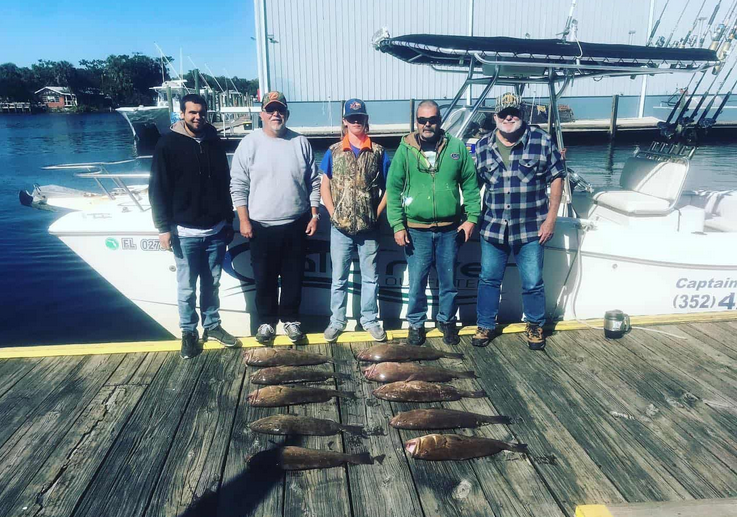Mastering the Art of Offshore Tuna Fishing: An Expert's Guide

Key Takeaways:
• Tuna is one of the most sought-after game fish for offshore anglers, known for their power, speed, and delicious meat.
• To catch tuna offshore, you'll need the right gear, techniques, and knowledge of their behavior and habitat.
• This guide will cover everything you need to know to successfully target and land tuna on your next offshore fishing trip.
Introduction
If you're an avid offshore angler, chances are you've got tuna at the top of your species bucket list. These magnificent predators are renowned for their incredible strength, lightning-fast speed, and succulent, sushi-grade flesh. Whether you're after yellowfin, bluefin, or blackfin tuna, learning how to effectively target these pelagic powerhouses can take your offshore fishing game to new heights.
In this comprehensive guide, we'll dive into the essential tactics, techniques, and gear you'll need to master the art of offshore tuna fishing. From understanding tuna behavior and habitat to selecting the proper tackle and employing proven trolling and chumming strategies, you'll be equipped with the knowledge and skills to consistently hook up with trophy tuna on your next offshore adventure.
Tuna Species and Habitat
Tuna are a diverse group of large, fast-swimming predatory fish found in tropical and temperate oceans around the world. The three main species targeted by offshore anglers are:
Yellowfin Tuna (Thunnus albacares): Known for their vibrant yellow fins and bellies, yellowfin is one of the most popular and abundant tuna species. They can grow to over 400 pounds and are found throughout the Gulf of Mexico, the Caribbean, and the Atlantic Ocean.
Bluefin Tuna (Thunnus thynnus): The largest and most valuable of the tuna species, bluefin can reach weights of over 1,000 pounds. They're primarily found in the North Atlantic and Mediterranean, though some populations exist in the Pacific.
Blackfin Tuna (Thunnus Atlanticus): Smaller than their yellowfin and bluefin cousins, blackfin tuna typically max out at around 50 pounds. They're abundant in the Gulf of Mexico, the Caribbean, and the western Atlantic.
Tuna are pelagic fish, meaning they primarily inhabit the open ocean and upper water column. They're often found near underwater seamounts, current edges, and temperature break lines - areas that concentrate baitfish and other prey. Understanding the local oceanographic conditions and tuna migration patterns in your fishing area is key to locating them offshore.
Offshore Tuna Fishing Gear and Tackle
Targeting tuna offshore requires specialized gear and tackle to handle their immense power and speed. Here's a rundown of the essential equipment you'll need:
Rod and Reel: A heavy-duty conventional or semi-automatic reel spooled with a 50- to 80-pound test braided line is a must. Pair it with a sturdy 6- to 8-foot stand-up rod with fast action and plenty of backbhttps://saltriveroutfitters.com/fly-fishing/one to subdue these hard-fighting fish.
Lures and Bait: Live baits like bonito, sardines, and cigar minnows are top producers of tuna. Trolled lures like diving plugs, large swimbaits, and bonito strips can also be deadly. Always have a variety of baits and lures on hand to match the prevailing conditions.
Fighting Harness: A fighting harness or stand-up belt is essential for managing the intense drag and powerful runs of big tuna. This allows you to leverage your body weight and distribute the strain across your hips and back.
Gaff and Lip Grippers: A heavy-duty gaff is needed to securely lip and lift large tuna into the boat. Lip grippers provide a safer alternative for smaller fish.
Coolers and Fish Boxes: High-quality insulated coolers or fish boxes are a must for preserving your tuna catch in prime condition. Ice down the fish immediately to maintain the best flavor and texture.
Tuna Fishing Techniques
When it comes to catching tuna offshore, there are several proven techniques to have in your arsenal. Let's explore some of the most effective methods:
Trolling: Trolling is one of the most popular and productive ways to target tuna. Deploy a spread of lures or live baits behind your boat, adjusting the speed and depth to match the fish's current activity level and feeding behavior.
Chumming: Chumming, or strategically distributing ground-up baitfish, is a reliable way to attract tuna to your boat and get them feeding aggressively. Combine chumming with live bait or lure presentations for maximum effectiveness.
Live Baiting: Hooking up with a lively baitfish and dropping it down to willing tuna is a proven tactic. Use a circle hook to minimize gut hooking and increase your catch-and-release success.
Jigging: Vertical jigging with heavy, metal jigs can be an exhilarating way to target tuna, especially over seamounts and other underwater structures. Experiment with different jig sizes, colors, and retrieval speeds to find what the fish are keying in on.
Fly Fishing: For the ultimate challenge, targeting tuna on the fly can be an incredibly rewarding experience. Use long, heavy-duty fly rods and stripped flies or baitfish patterns to fool these lightning-fast predators.
Offshore Tuna Fishing Tips and Tactics
To consistently put tuna in the boat, keep these expert tips and tactics in mind:
Scout for Baitfish and Birds: Tuna often hunt in packs, so look for signs of baitfish activity and diving birds, which can indicate the presence of tuna below the surface.
Watch the Weather and Currents: Tuna are highly sensitive to changes in water temperature, current, and other environmental factors. Monitor weather forecasts and be prepared to adjust your tactics accordingly.
Use Electronics Effectively: Modern fishfinders, chart plotters, and sonar can be invaluable tools for locating tuna and other offshore game fish. Learn how to interpret your electronics to maximize your chances of success.
Handle Tuna with Care: Tuna are incredibly strong and resilient fish, but they're also sensitive to handling. Use careful dehooking and revival techniques to ensure the best possible post-release survival rates.
Develop a Tuna Fishing Routine: Consistency is key when it comes to tuna fishing. Establish a well-rehearsed routine for everything from rigging baits to fighting and landing fish to streamline your process and boost your productivity.
FAQs
What is the best bait for offshore tuna fishing?
Live baits like bonito, sardines, and cigar minnows are consistently top producers of tuna. They closely mimic the natural prey of these predatory fish.
What is the best time of year to target tuna offshore?
The optimal tuna fishing season varies by location, but in general, the warmer months from late spring through early fall tend to be the most productive.
How deep do you fish for offshore tuna?
Tuna can be found throughout the water column, from the surface down to several hundred feet deep. The key is to identify the depth at which the baitfish and tuna are concentrated and present your baits or lures at that level.
What is the difference between offshore and inshore fishing?
Offshore fishing typically takes place in deeper, open ocean waters, while inshore fishing is done in more shallow, nearshore areas. Offshore anglers target large, pelagic species like tuna, marlin, and sailfish, while inshore anglers focus on species like redfish, trout, and snook.
What is considered offshore fishing?
Offshore fishing is generally defined as fishing that takes place more than 3 miles from the coastline, in waters deeper than 100 feet. It often involves venturing out to remote, blue-water fishing grounds in pursuit of large, migratory game fish.
What size boat is best for offshore fishing?
The ideal boat size for offshore fishing depends on factors like the distance you'll be traveling, the weather conditions you'll face, and the size of the fish you're targeting. As a general rule, a boat in the 25- to 40-foot range is well-suited for most offshore fishing trips.
With the right gear, tactics, and know-how, the thrill of battling a trophy tuna offshore can be yours. By putting the insights and techniques outlined in this guide into practice, you'll be well on your way to consistently landing these magnificent, hard-fighting fish. So get out there, stay vigilant, and get ready for the fight of a lifetime!
Note: IndiBlogHub features both user-submitted and editorial content. We do not verify third-party contributions. Read our Disclaimer and Privacy Policyfor details.







